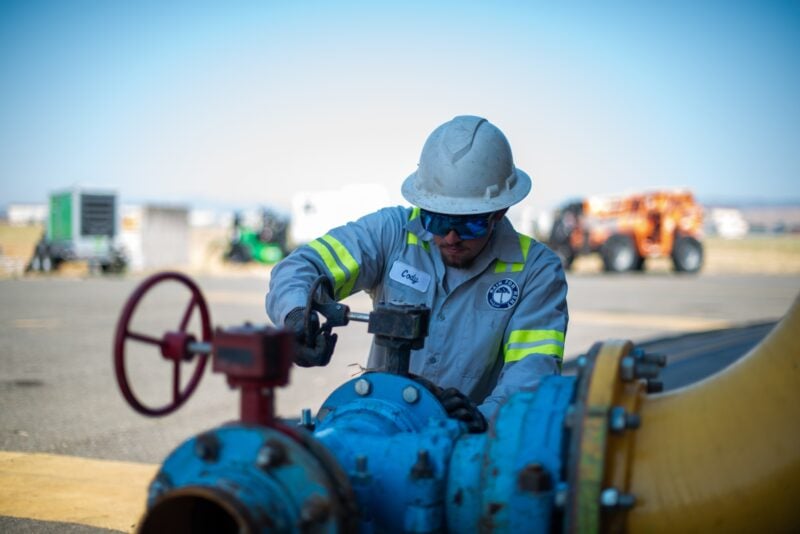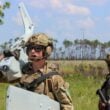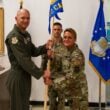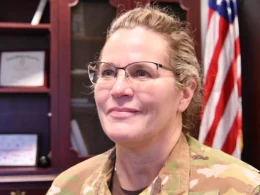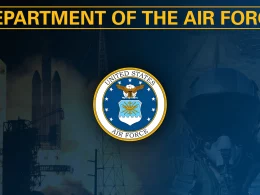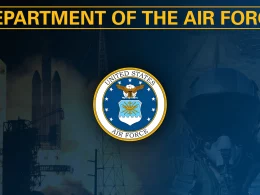TRAVIS AIR FORCE BASE, Calif. —
A team of engineers from SAK Construction, managed by Cape Environmental INC., and overseen by the United States Army Corps of Engineers (USACE) and Air Force Civil Engineer Center (AFCEC), worked together to install a stormwater conveyance system liner at Travis Air Force Base July 2024.
The team recently completed site restoration associated with the project.
Over the course of the 10-day installation, teams worked together to install a 2,300 linear foot, 45,139 pound liner around the conveyance system utilizing forklifts, a conveyor system, and a squeeze roller. This effort is part of a larger three-year environmental remediation project.
The conveyance system serves as a drainage conduit by which stormwater run-off is collected on base and conveyed to a drainage ditch known as Union Creek. Union Creek is a seasonal creek consisting primarily of this stormwater and treated groundwater from the installation’s environmental restoration activities.
“The liner will reinforce the existing storm drainage line and will prevent any contaminants from leaking into the line,” said Joshua Haskins, USACE’s Rapid Response program manager. “This liner also had to be styrene-free resin to ensure safety of aquatic wildlife downgradient.”
Haskins is a member of the team that oversaw the installation of the liner.
This project arose as part of Travis AFB’s comprehensive investigation into a series of intermittent sheens that were observed in the Union Creek drainage ditch area. These sheens typically appeared on the water’s surface, some of which had an iridescent rainbow appearance. These sheens can be caused by the interaction of water and petroleum products or by naturally occurring environmental events such as plant decomposition.
“In order to eliminate the possibility of petroleum products entering the stormwater conveyance system from the surrounding soil, the integrity of the stormwater conveyance was checked with video scoping that showed over time, parts of the pipeline had degraded,” said David McGraw, AFCEC Installation Support Section program manager.
As a result, Travis AFB, in partnership with USACE and AFCEC, installed the liner. In order to restore the structural strength of the pipeline, a cured-in-place pipe (CIPP) liner was considered the best effective solution.
“The one distinct hurdle in this project was it involved an active runway serving the largest aerial port on the West Coast,” said McGraw. “Airfield operations, the base community planner, 60th Engineers, USACE Rapid Response, Security Forces, and another construction project by the AFCEC all had to work together to deconflict operations, get contractors onto base, and notify base entities the massive project was taking place.”
As part of this project, the team deployed video scoping along targeted segments to identify irregularities. During the analysis, the team identified numerous cracks and fractures. This data was shared with the regulatory agencies and the assessment was directly used to implement measures to make necessary repairs and start work towards planning the liner install.
“The liner is very similar to when you have defective plumbing in your own house,” said McGraw. “You are coating the inside of the pipe with an impermeable barrier that is in some ways longer lasting than the concrete that was originally installed.”
Being a particularly large project, a custom-made liner had to be made to accommodate the 72-inch diameter of the conveyance system.
“The timely execution of the project is a tribute to USACE Rapid Response Team,” said McGraw. “The timeline they provided was not only accurate, but they executed ahead of schedule in many cases.”
The liner project is part of a larger remediation plan at Travis. In fact, the investigation of the conveyance system is one of six lines of efforts to remediate any areas of potential concern.
To address the intermittent sheens, a team of experts installed various mitigation efforts such as booms, skimmers and an underflow dam.
“The underflow dam slows the water,” said McGraw. “Petroleum products tend to float to the surface because they’re less dense, so a skimmer pulls whatever film is at the surface. [The underflow dam] is angled so that the water on the bottom flows through and at the top it slows it enough for the skimmers to harvest [off the top].”
To allay any concerns for the wildlife in Union Creek, the water that was used to cure the liner was held in a temporary lake tank. Water samples were tested for ecotoxicity by a certified laboratory using industry proven methods which demonstrated that the water was clean of any contaminants.
The certified toxic-free water was also filtered through a large granulated activated-carbon filtration system prior to its release into Union Creek.
“The work plans were a collaboration with local and federal environmental agencies and adjustments were made to address concerns,” said McGraw. “To be able to fully line such an extensive length of pipe without affecting airfield and base operations is a huge success. The logistics to move in both the massive liner and lake tank took careful planning.”
For more information on environmental restoration projects https://www.travis.af.mil/About-Us/Environment/Environmental-Restoration/.




